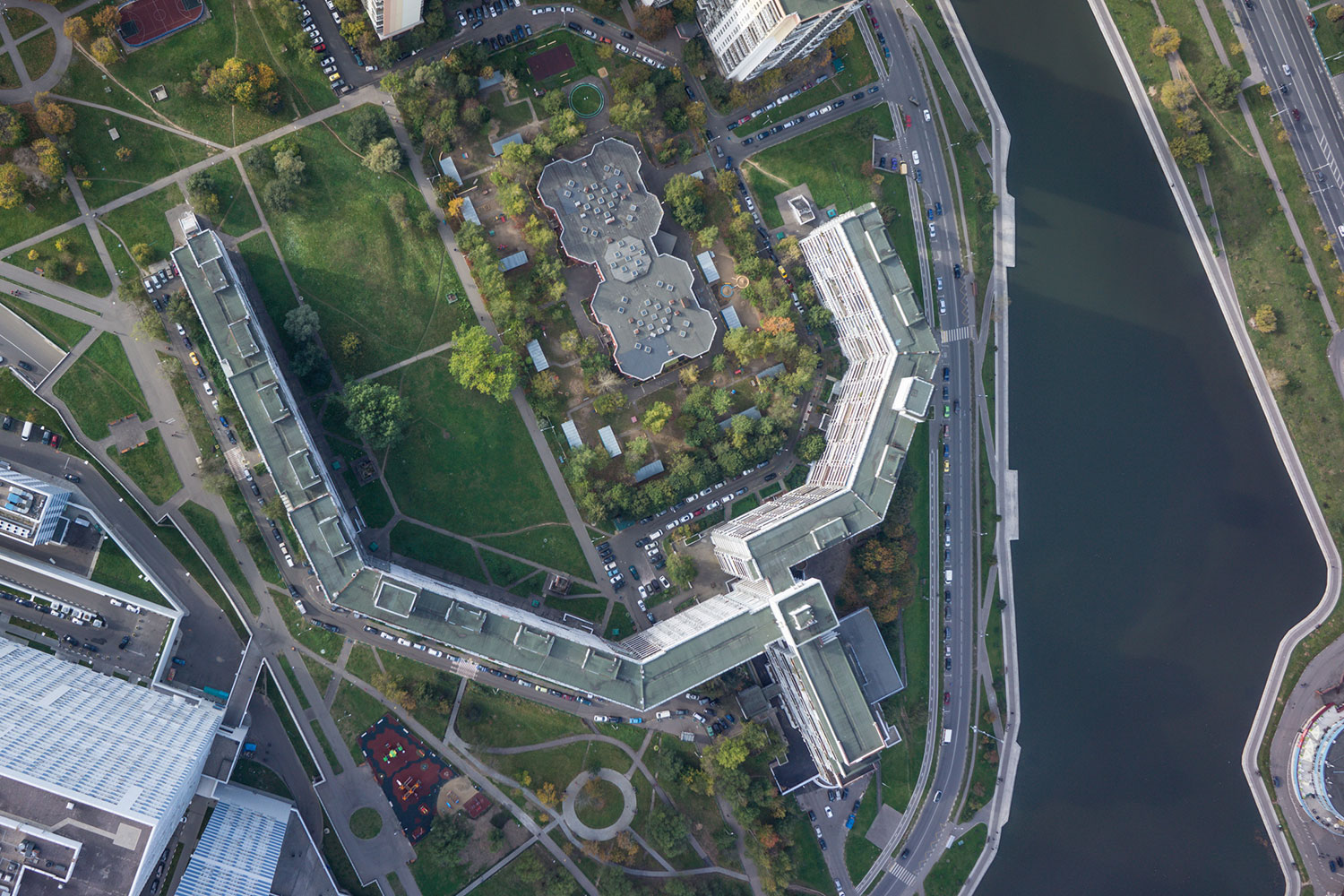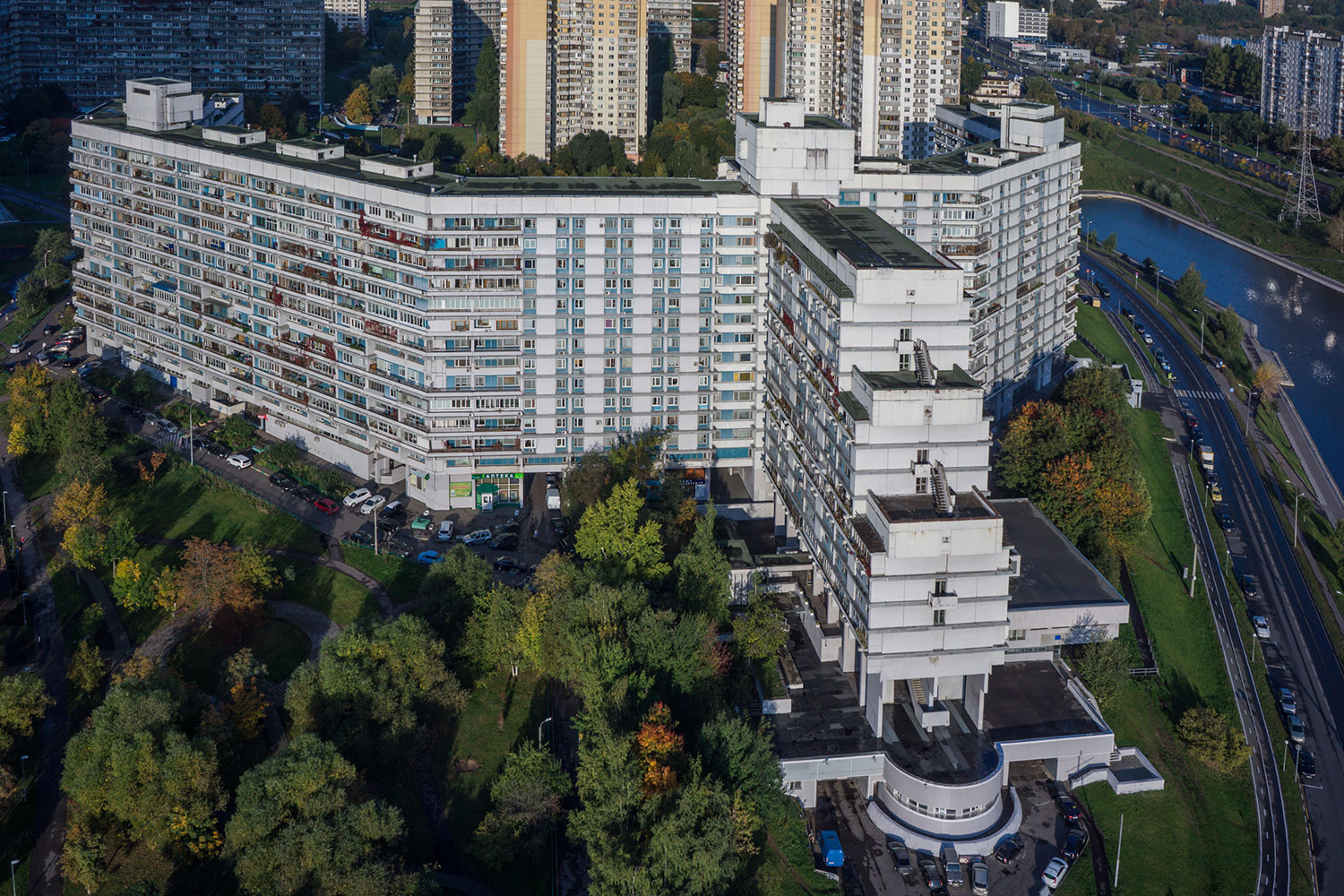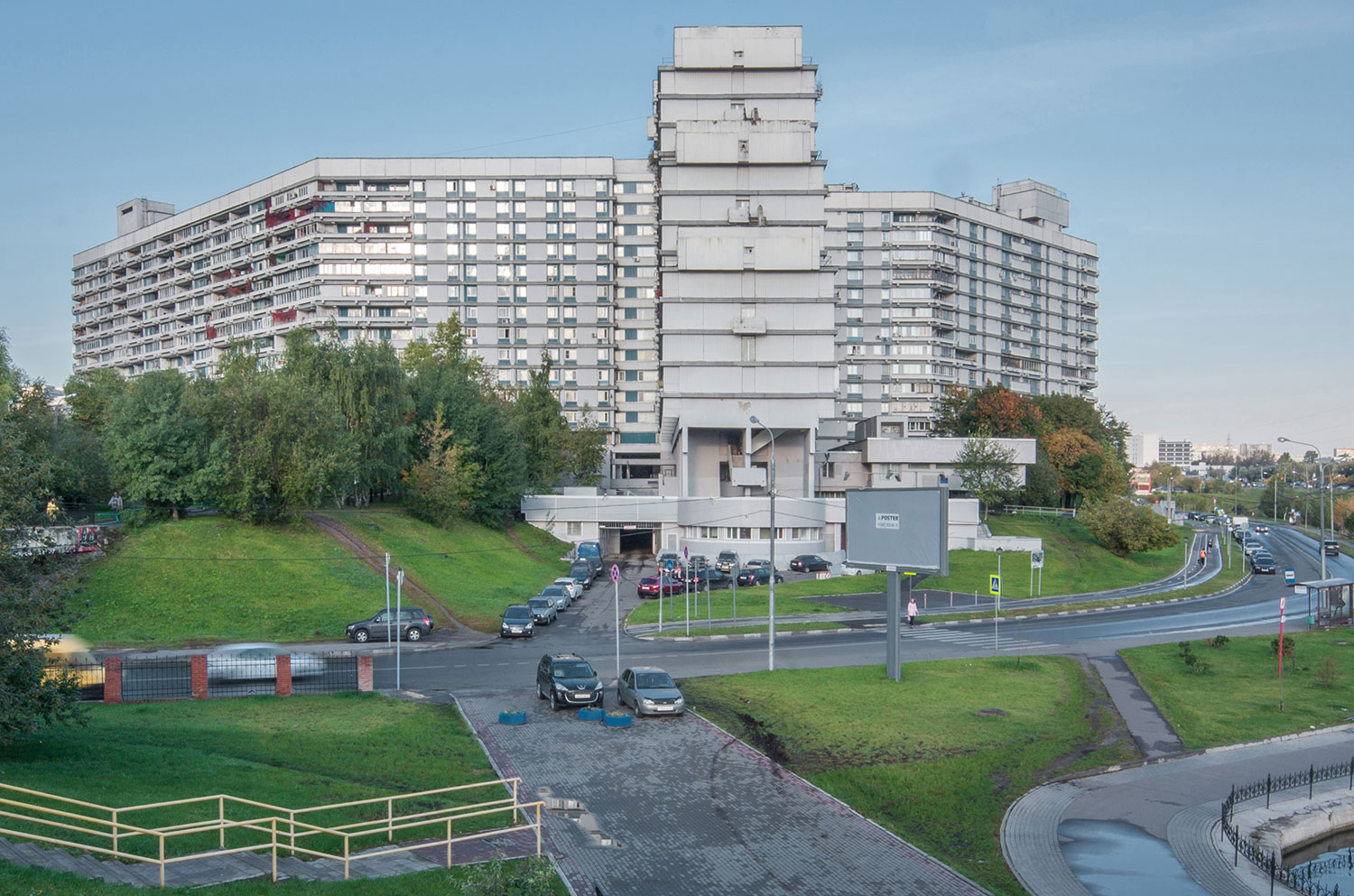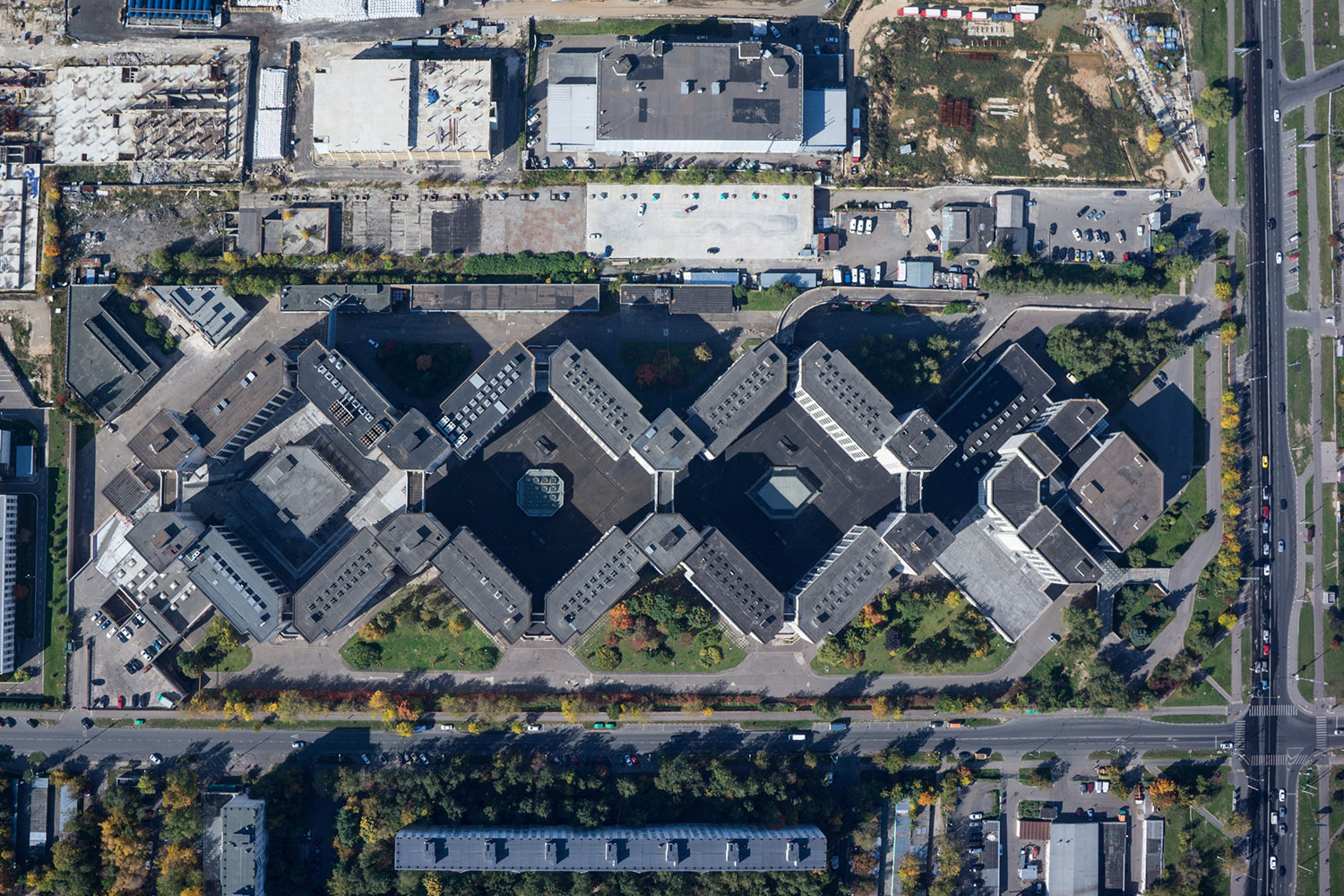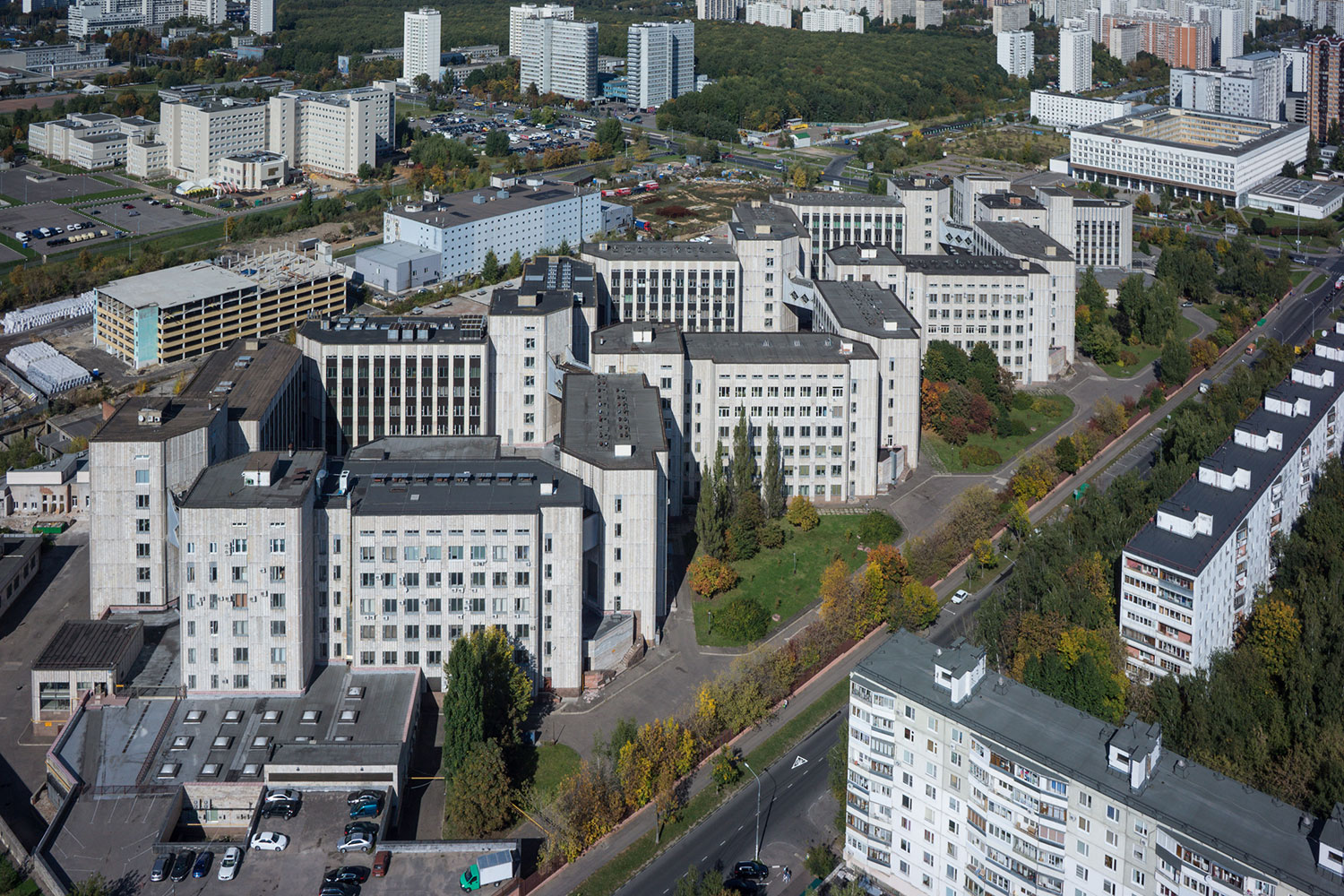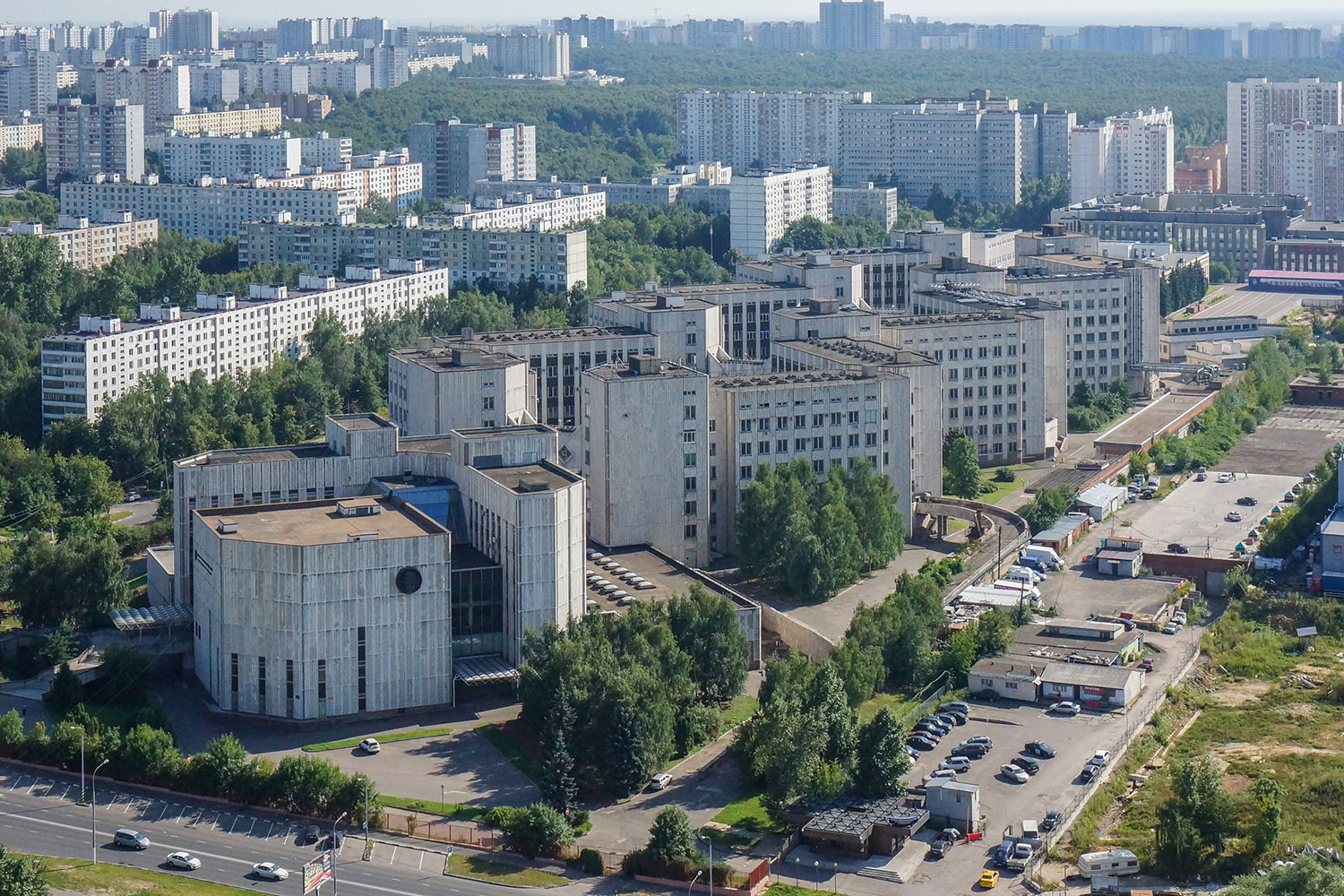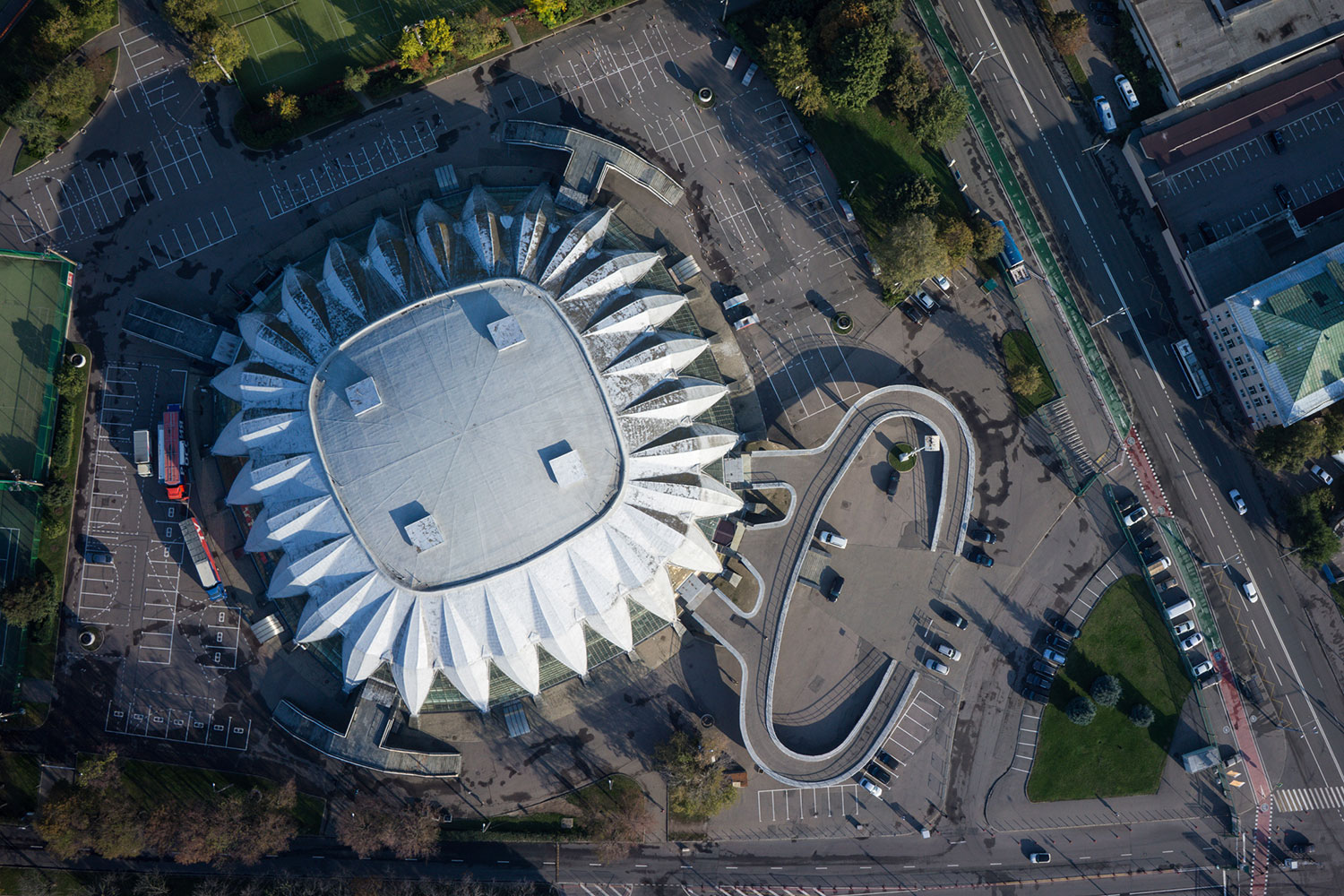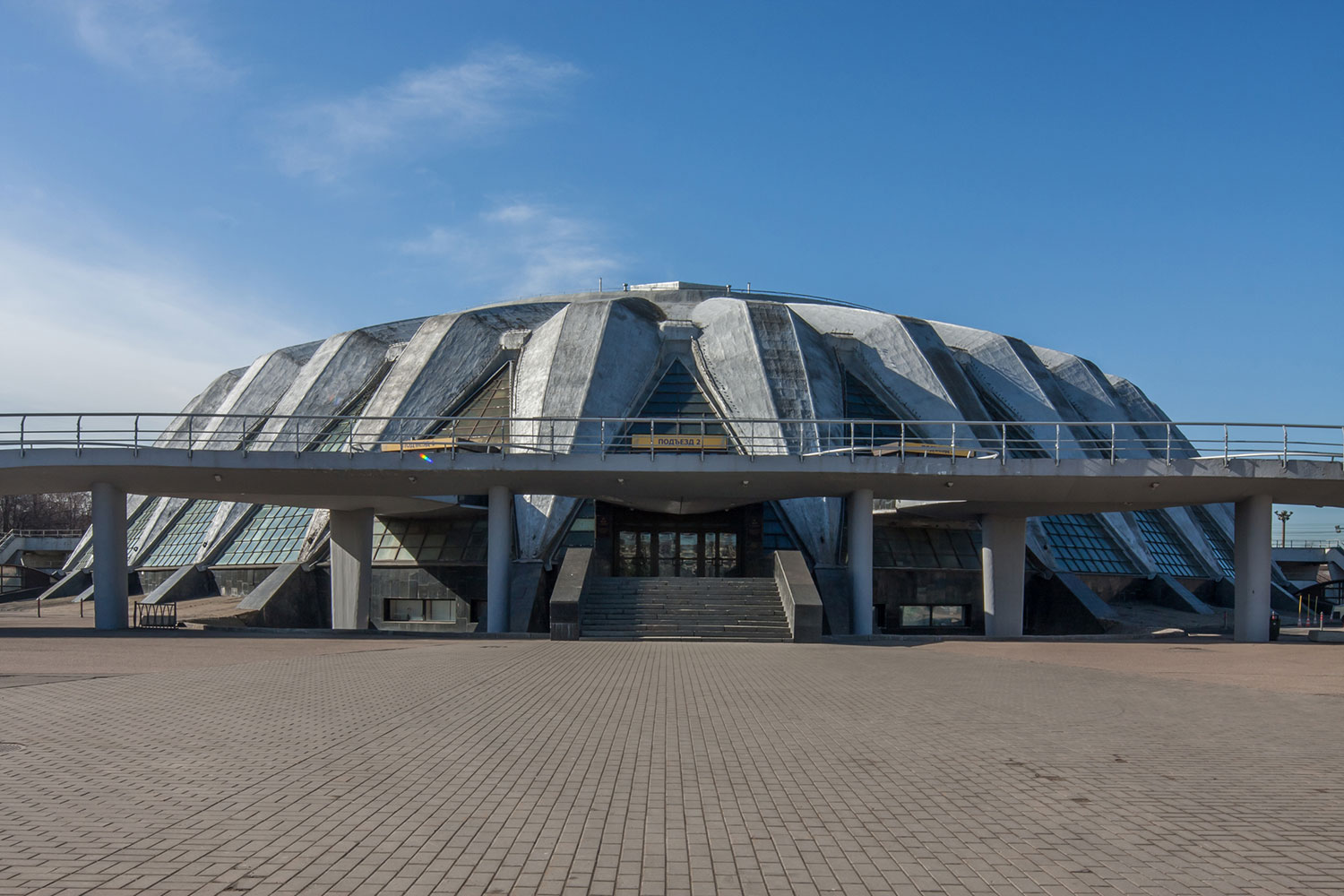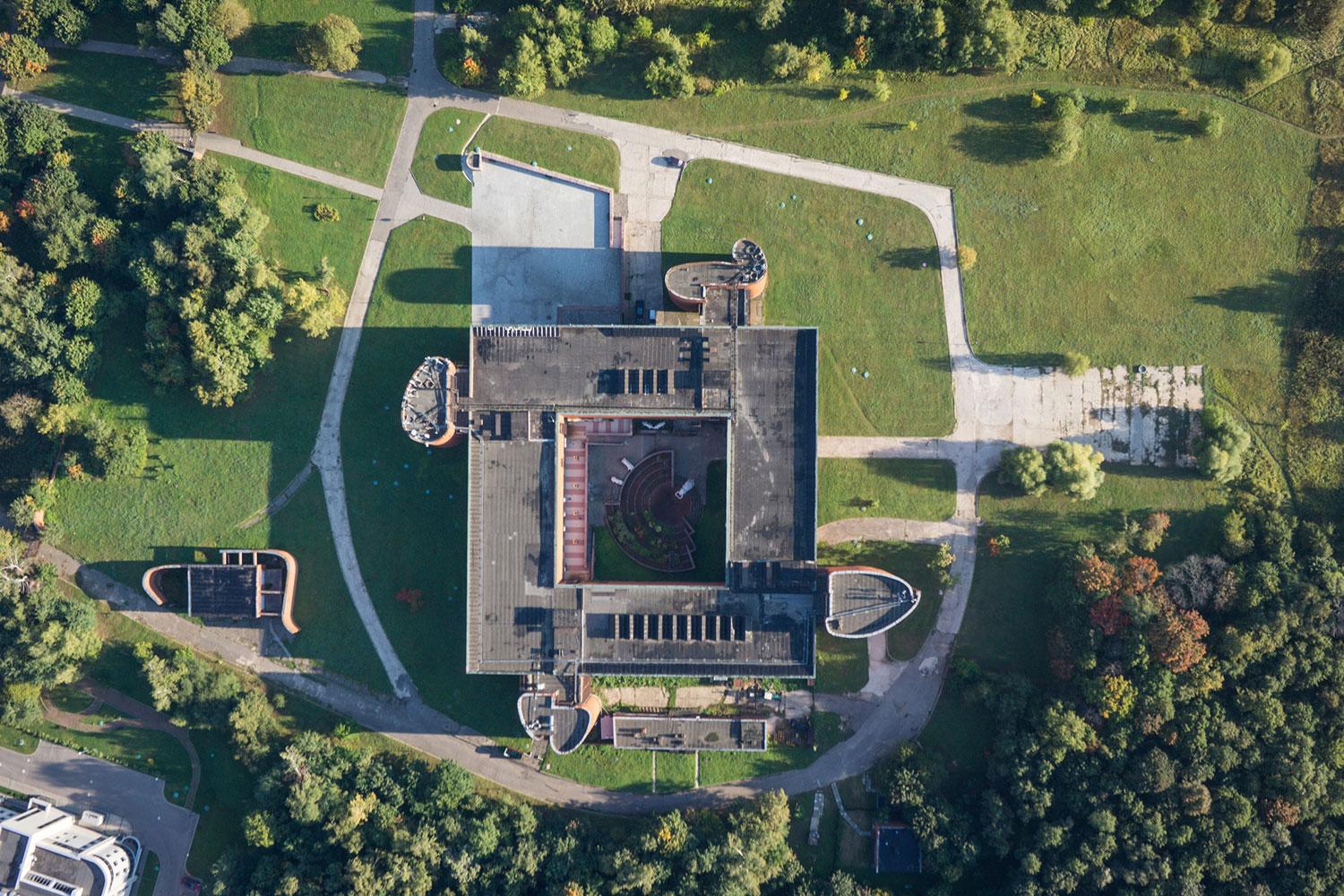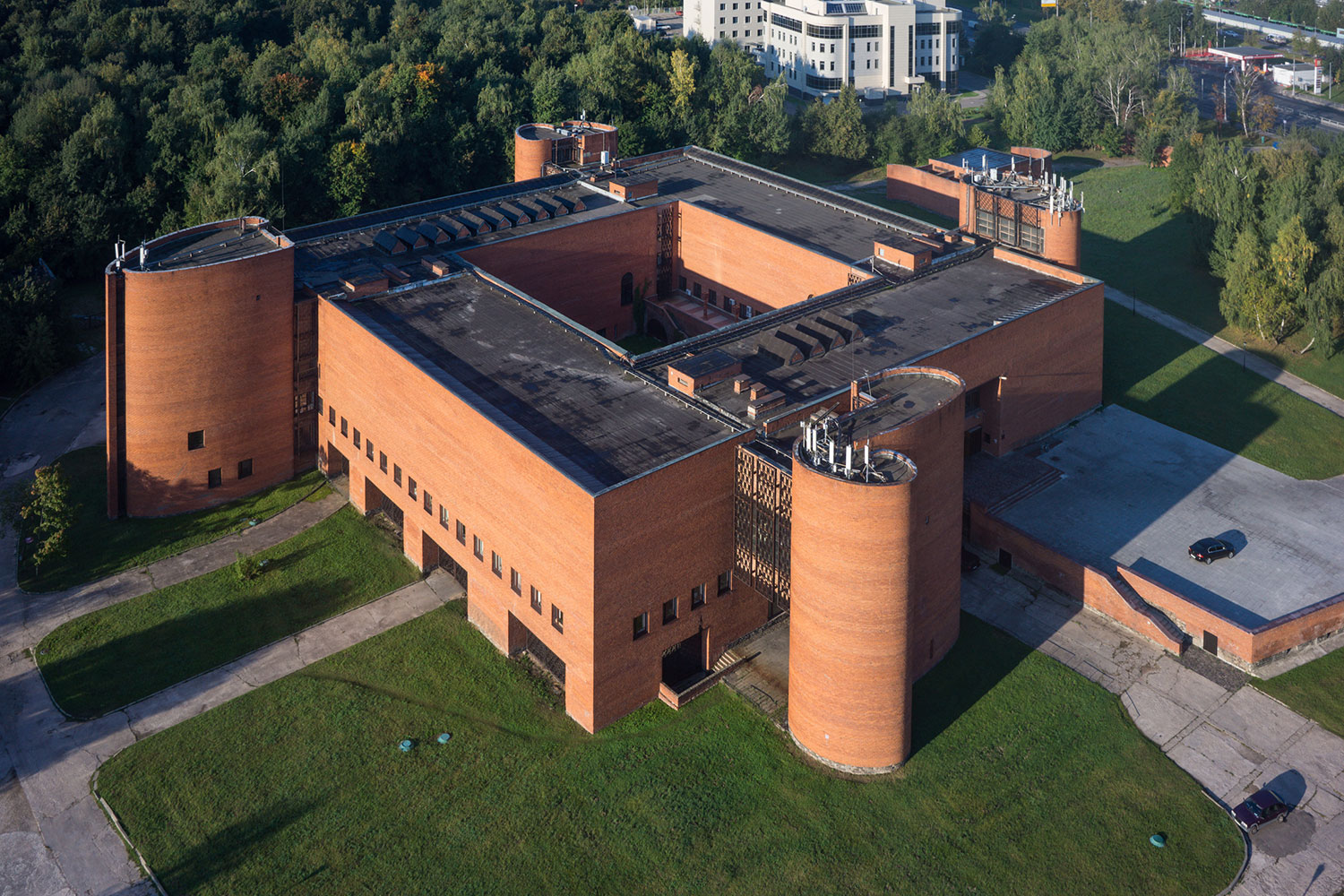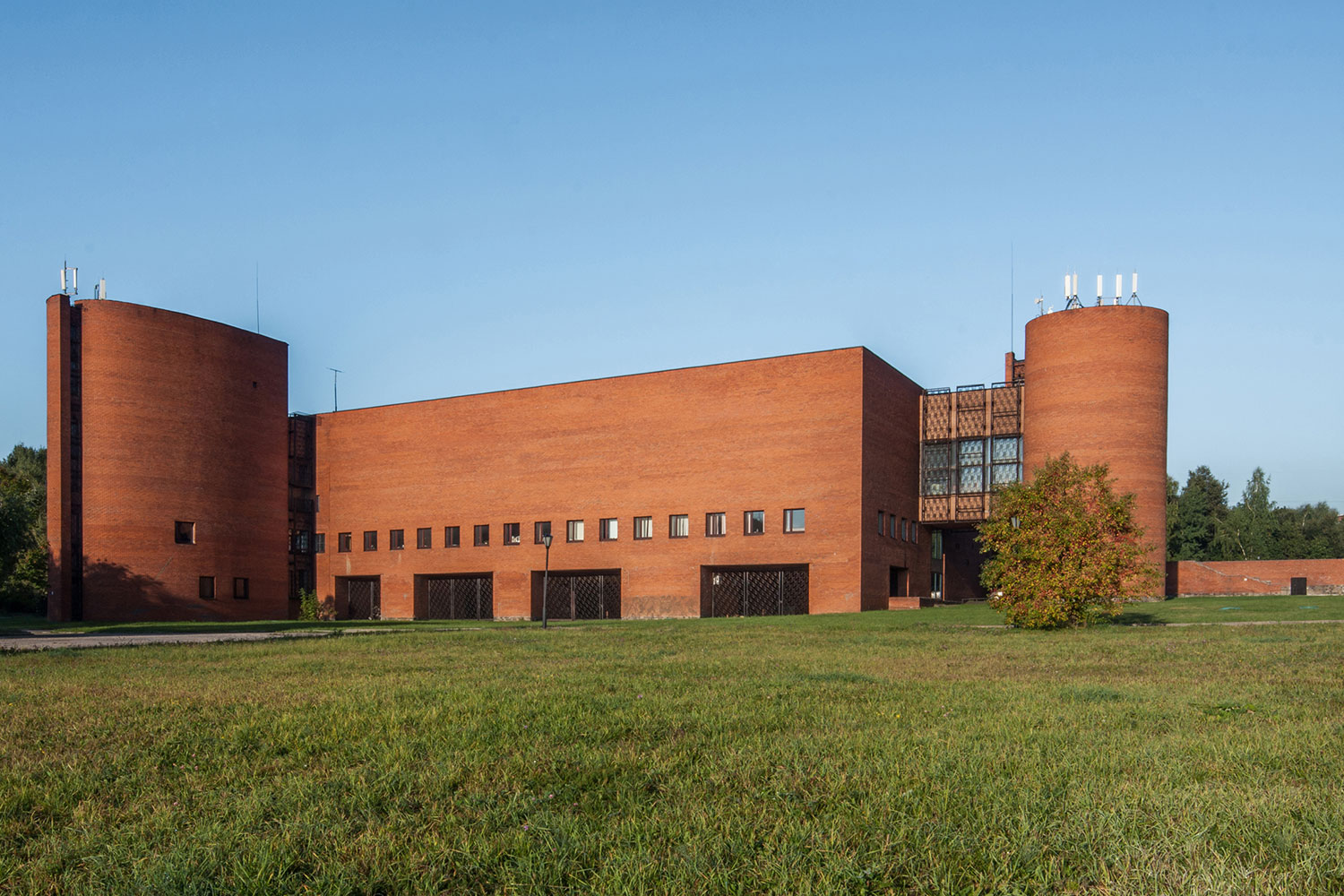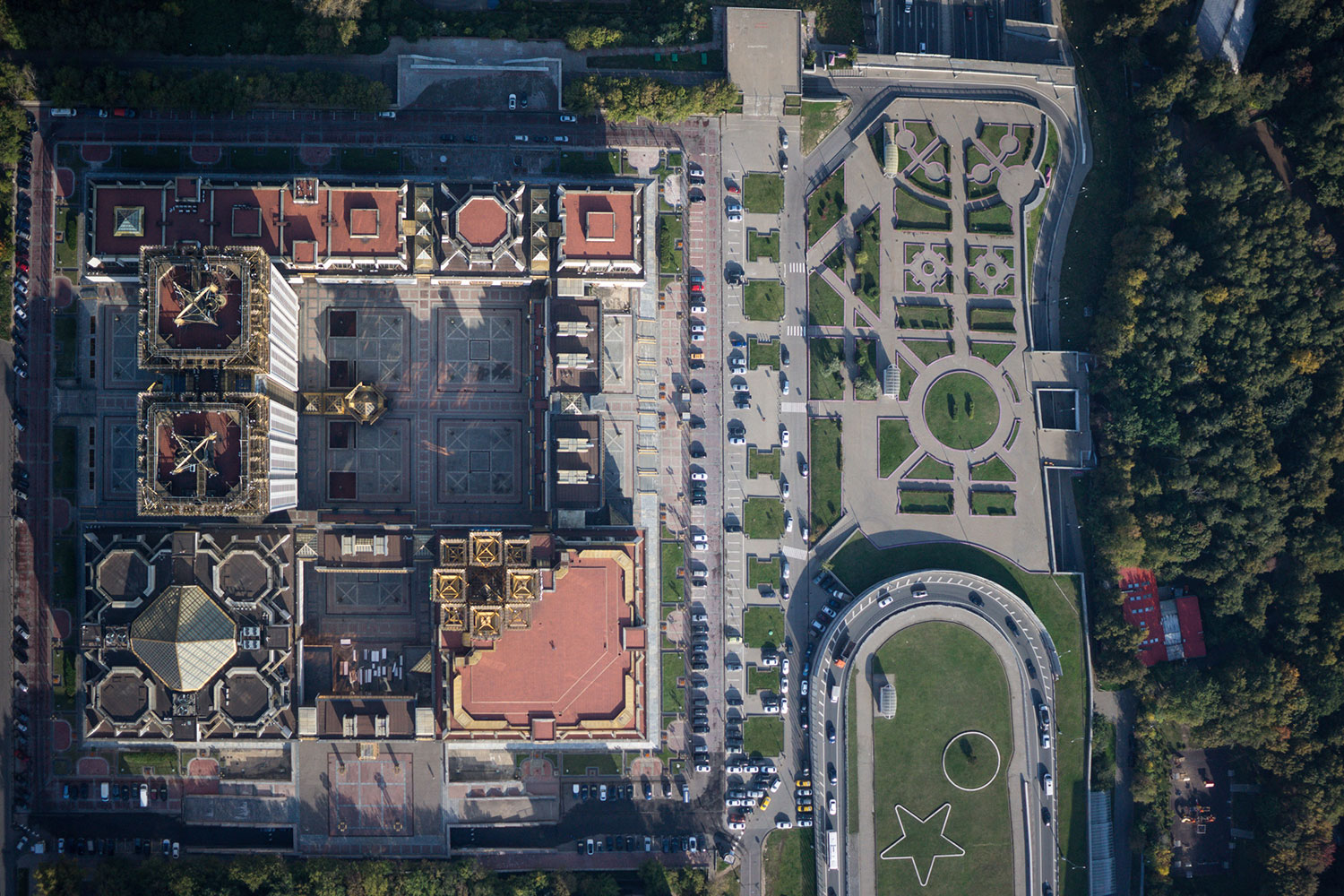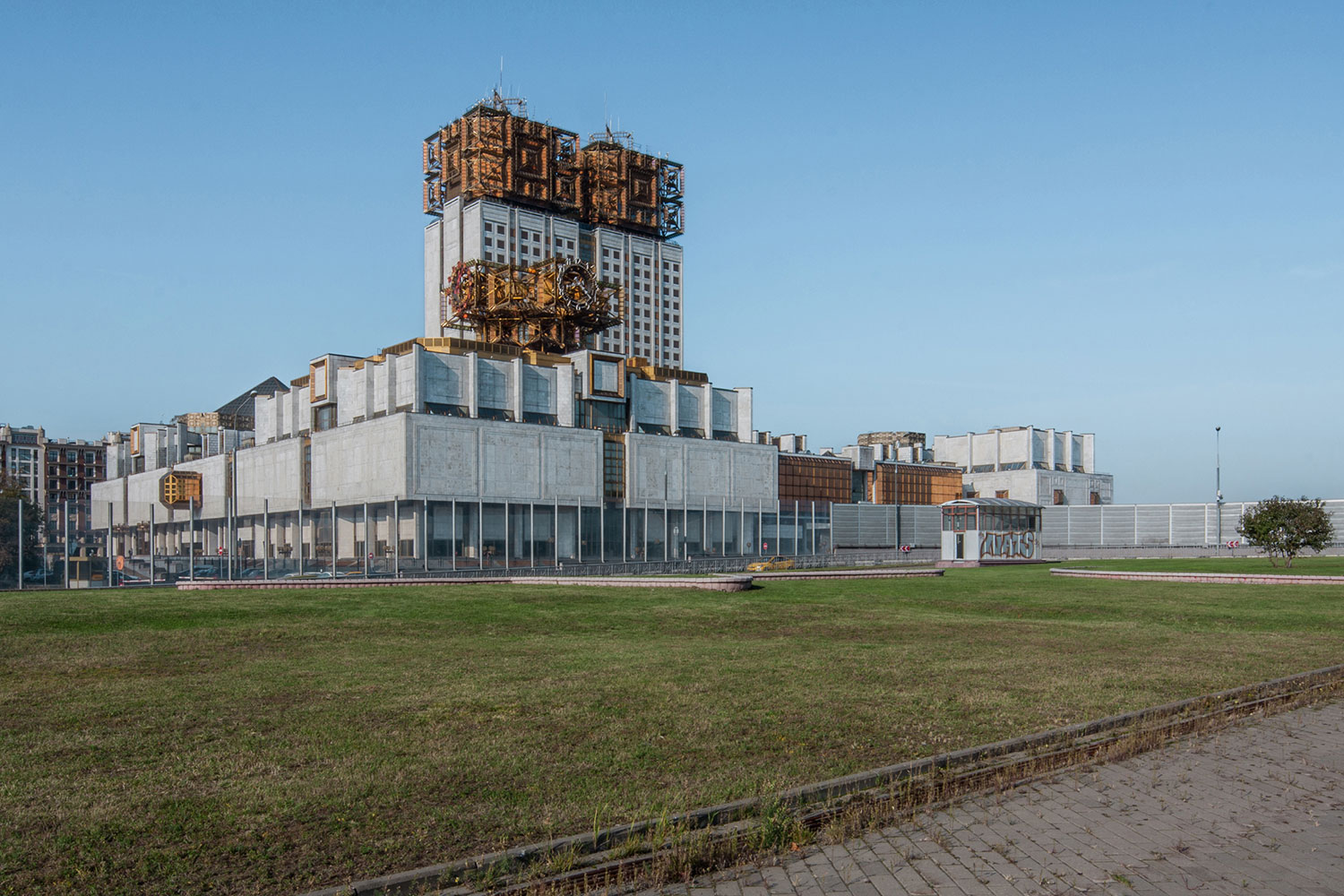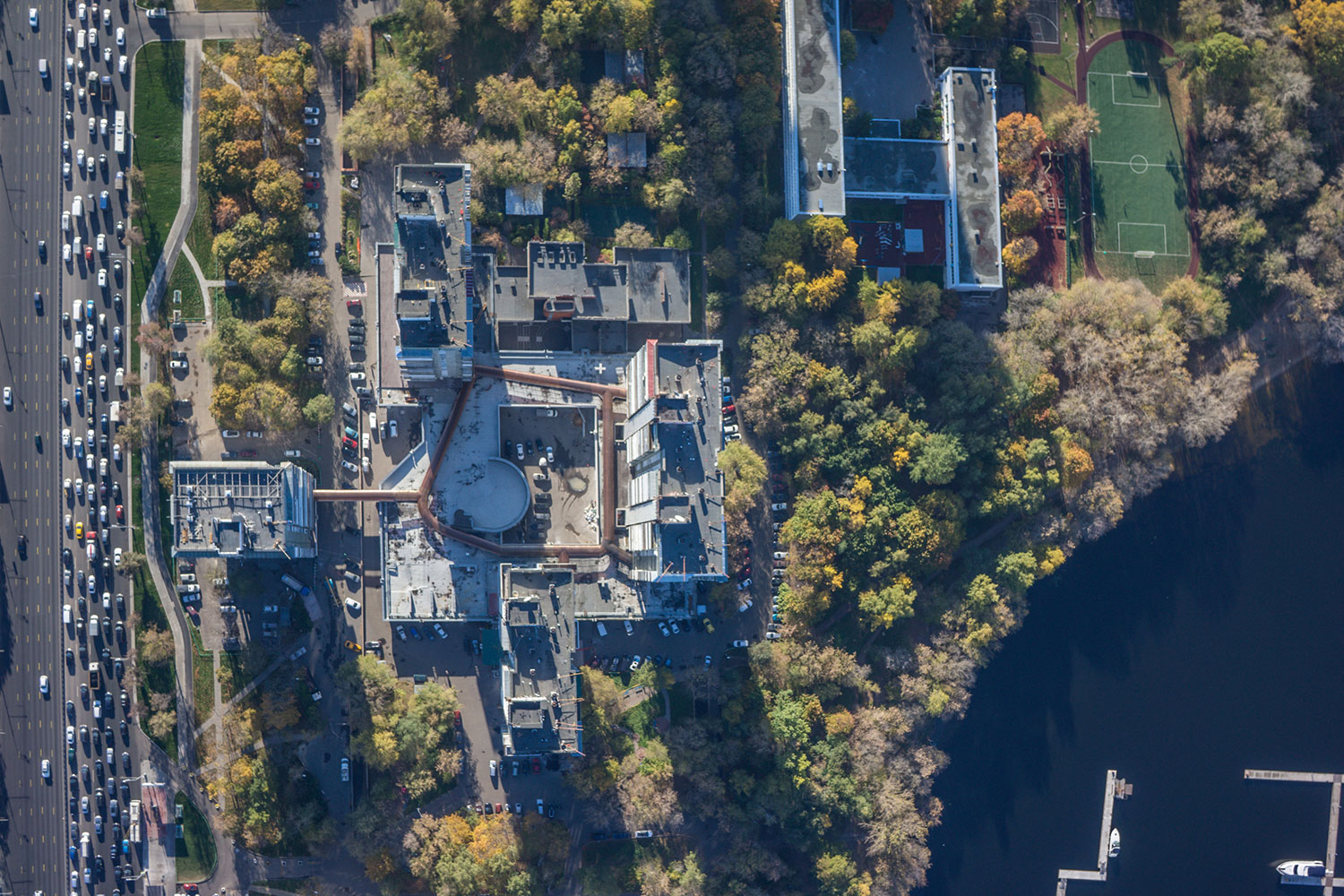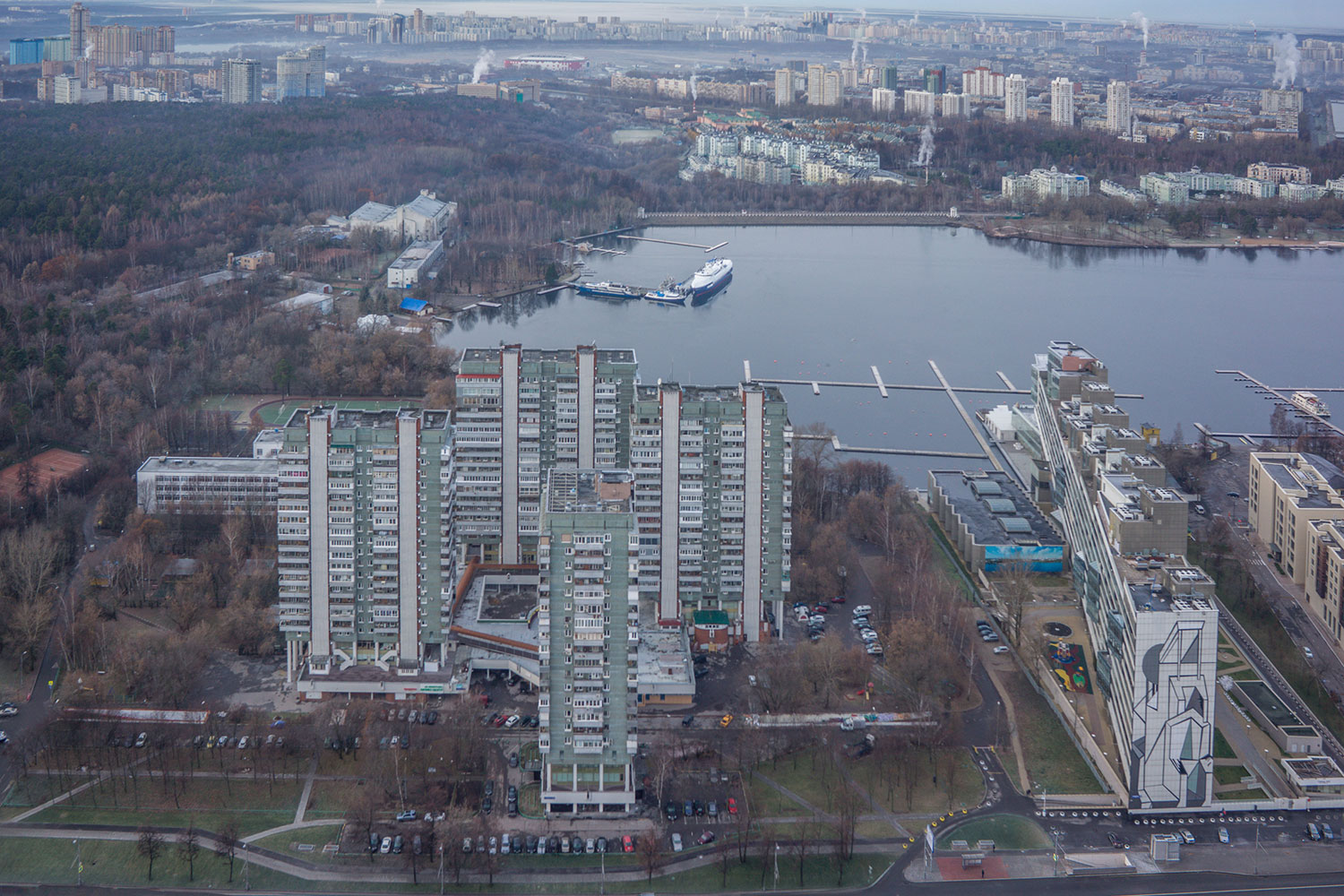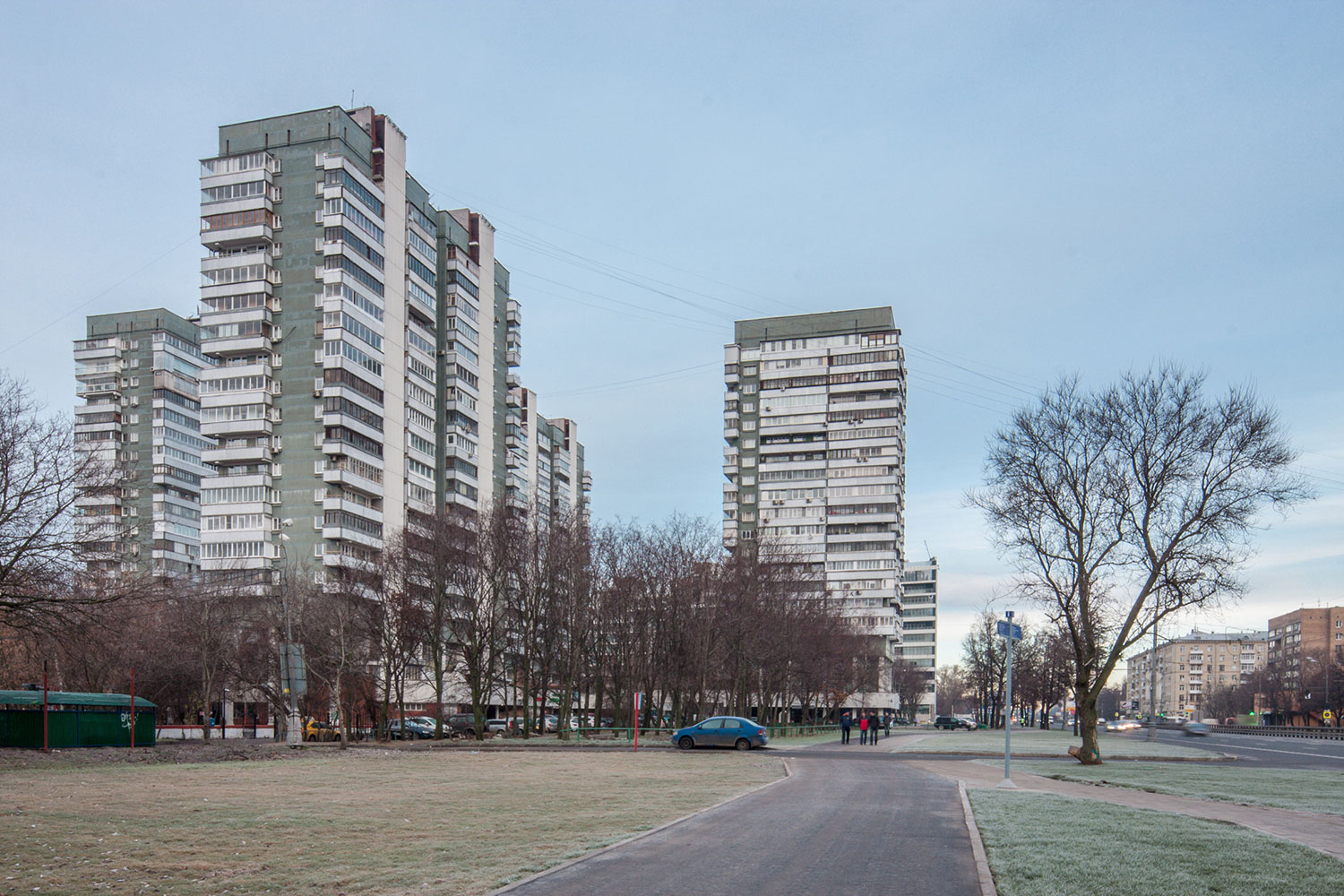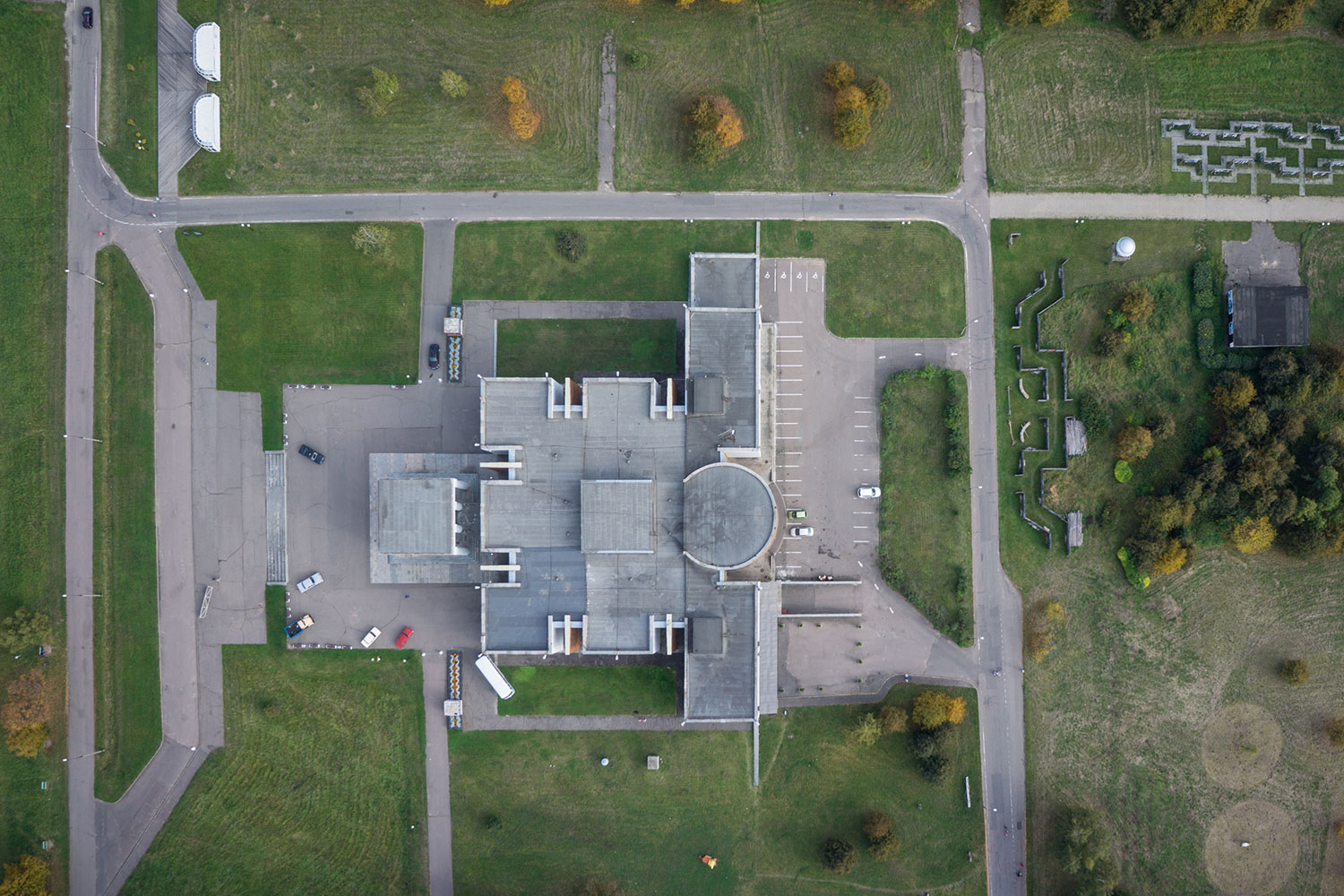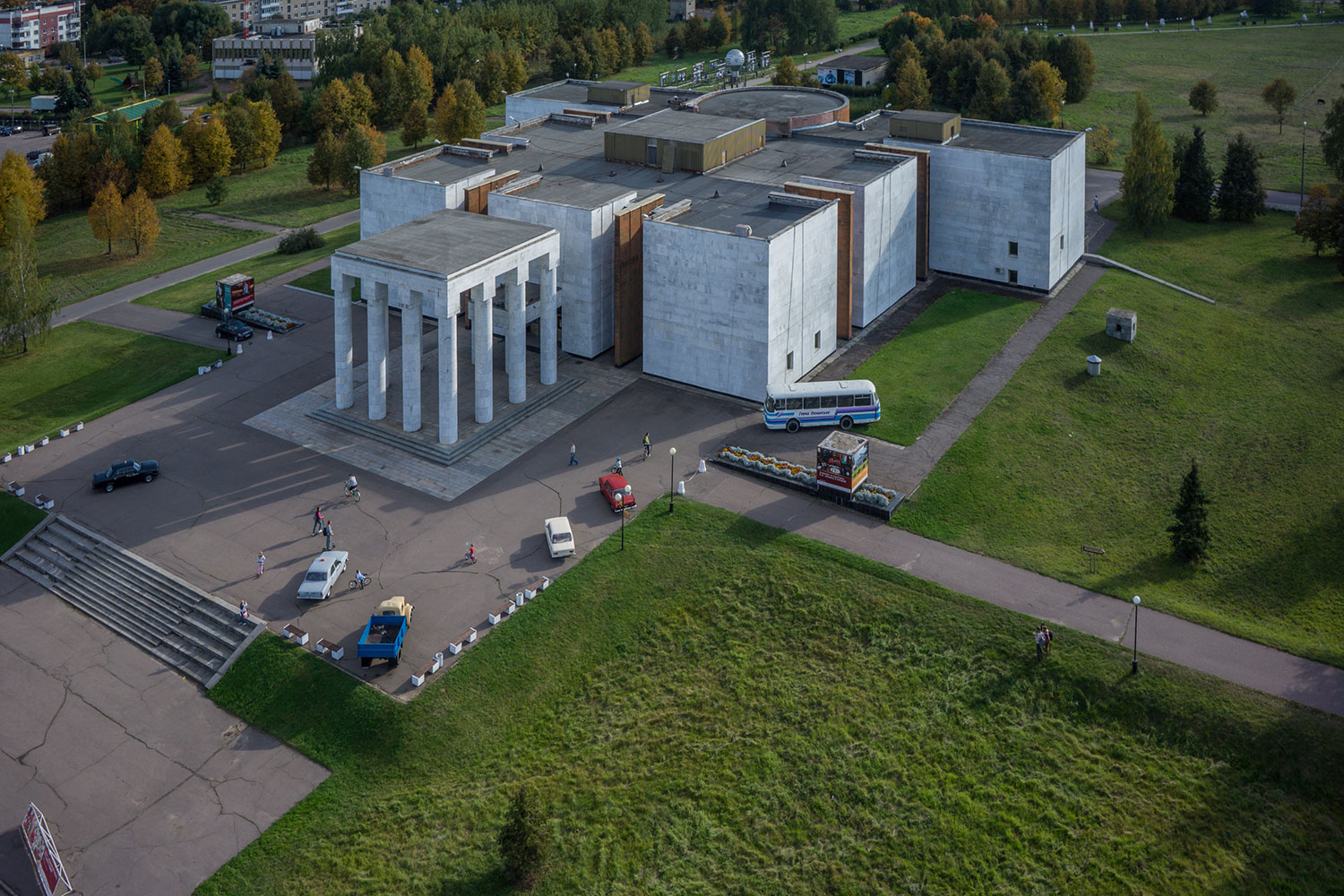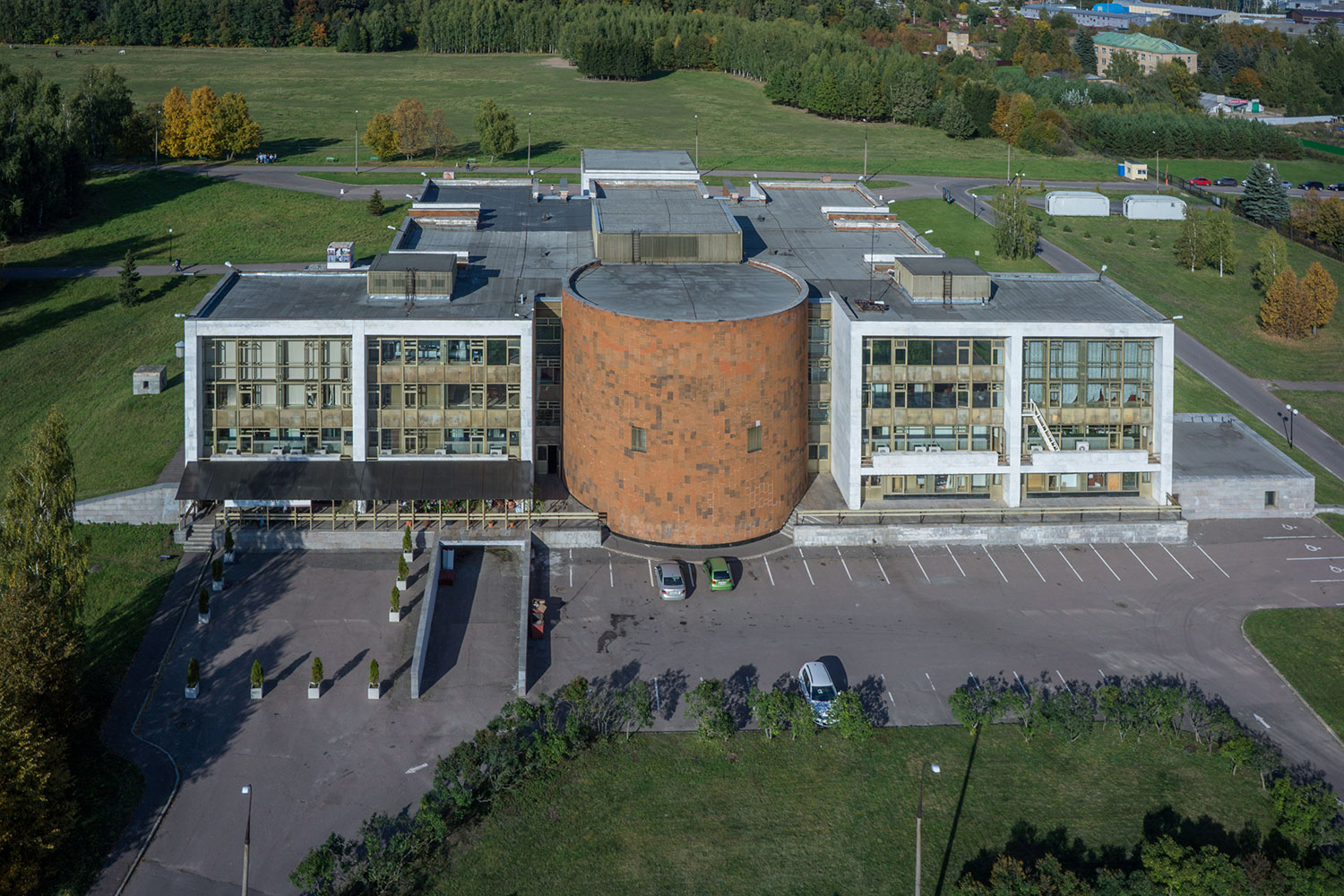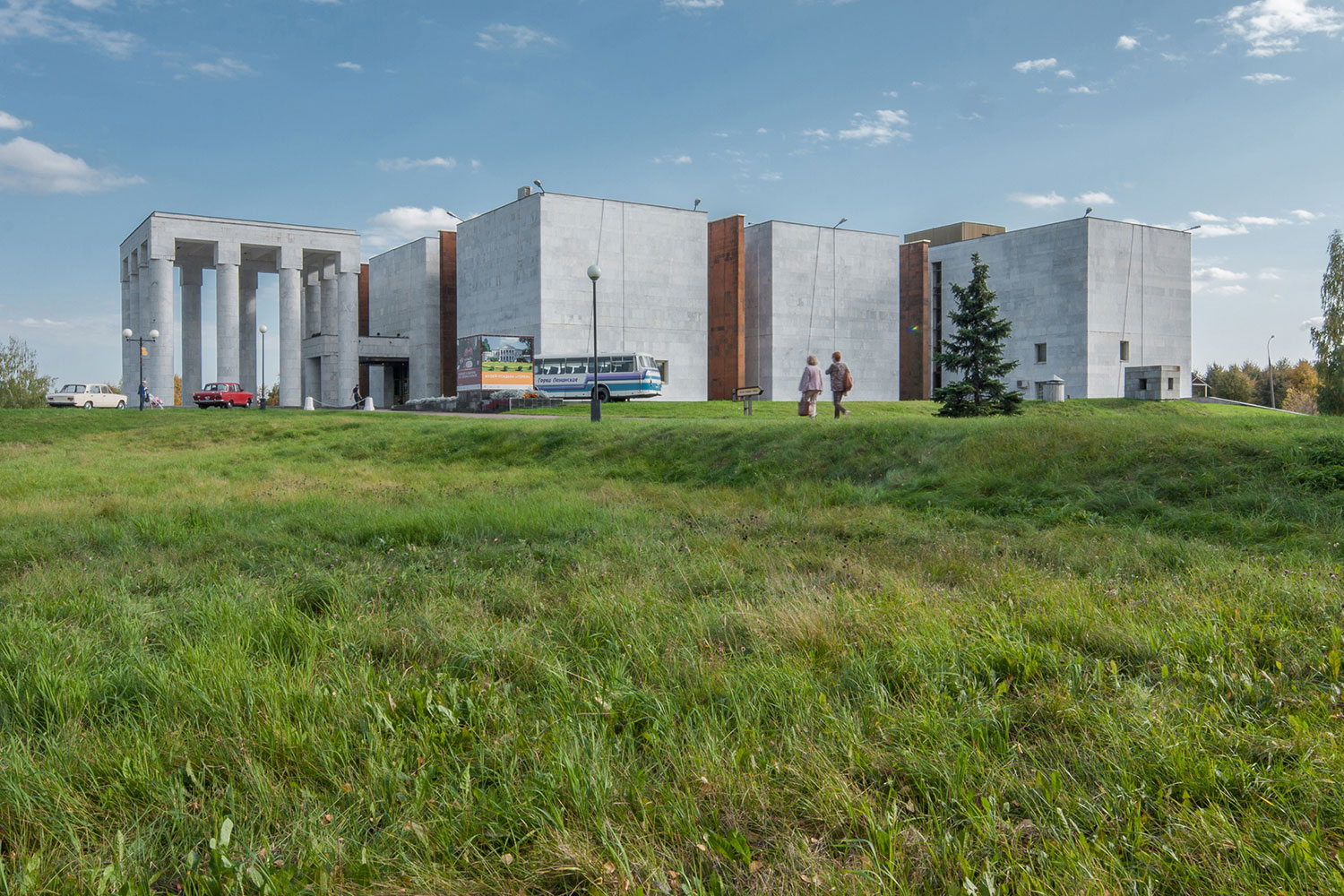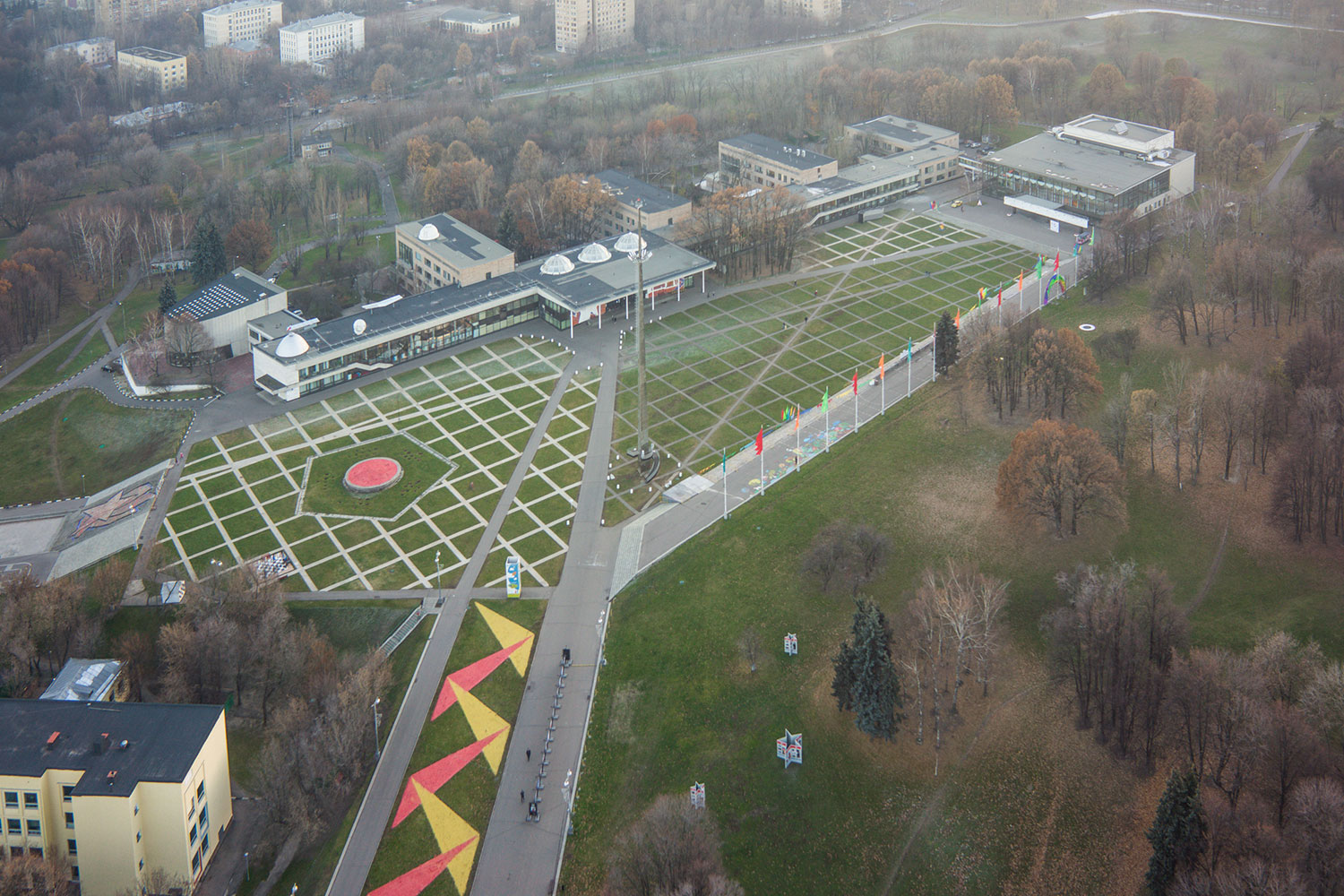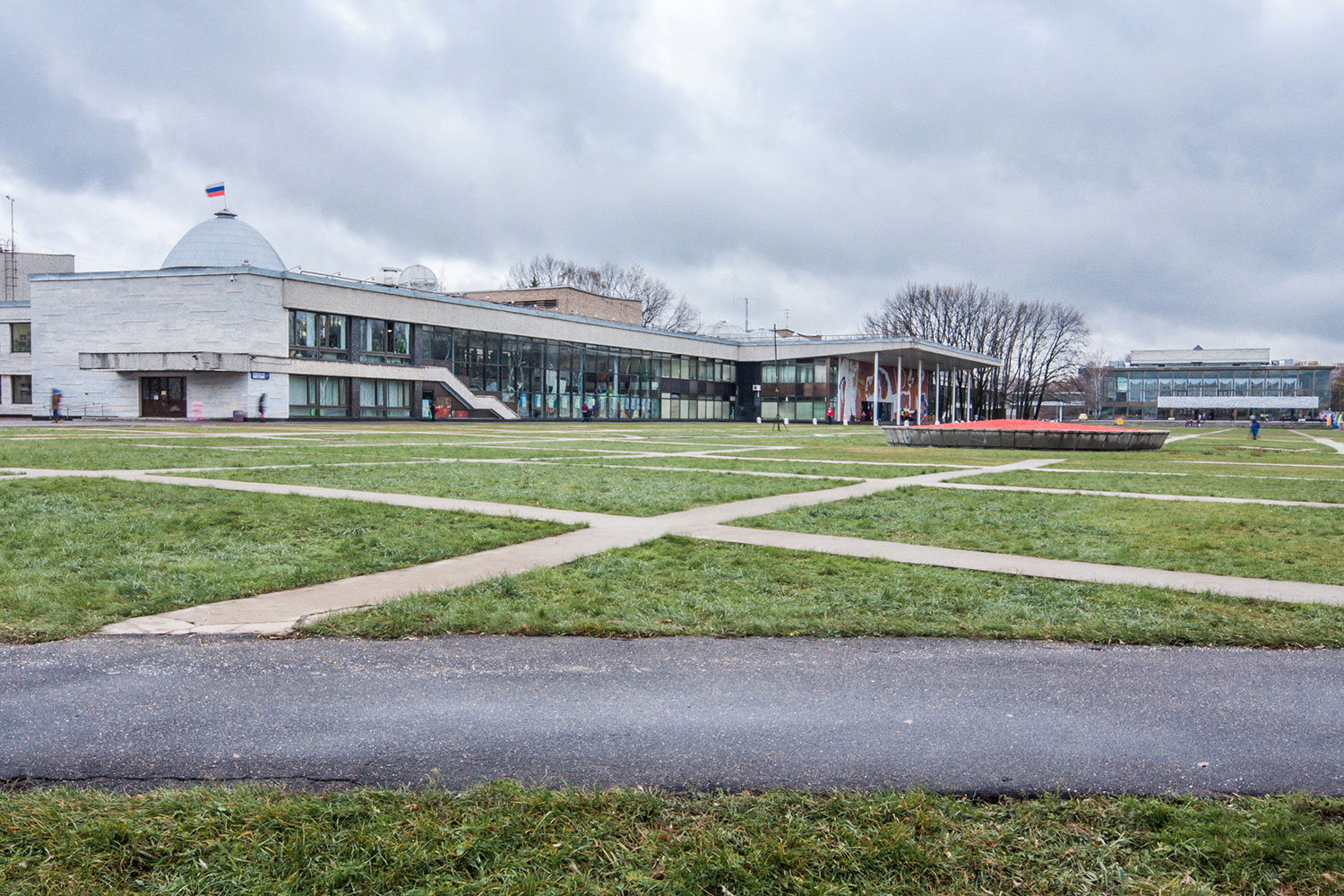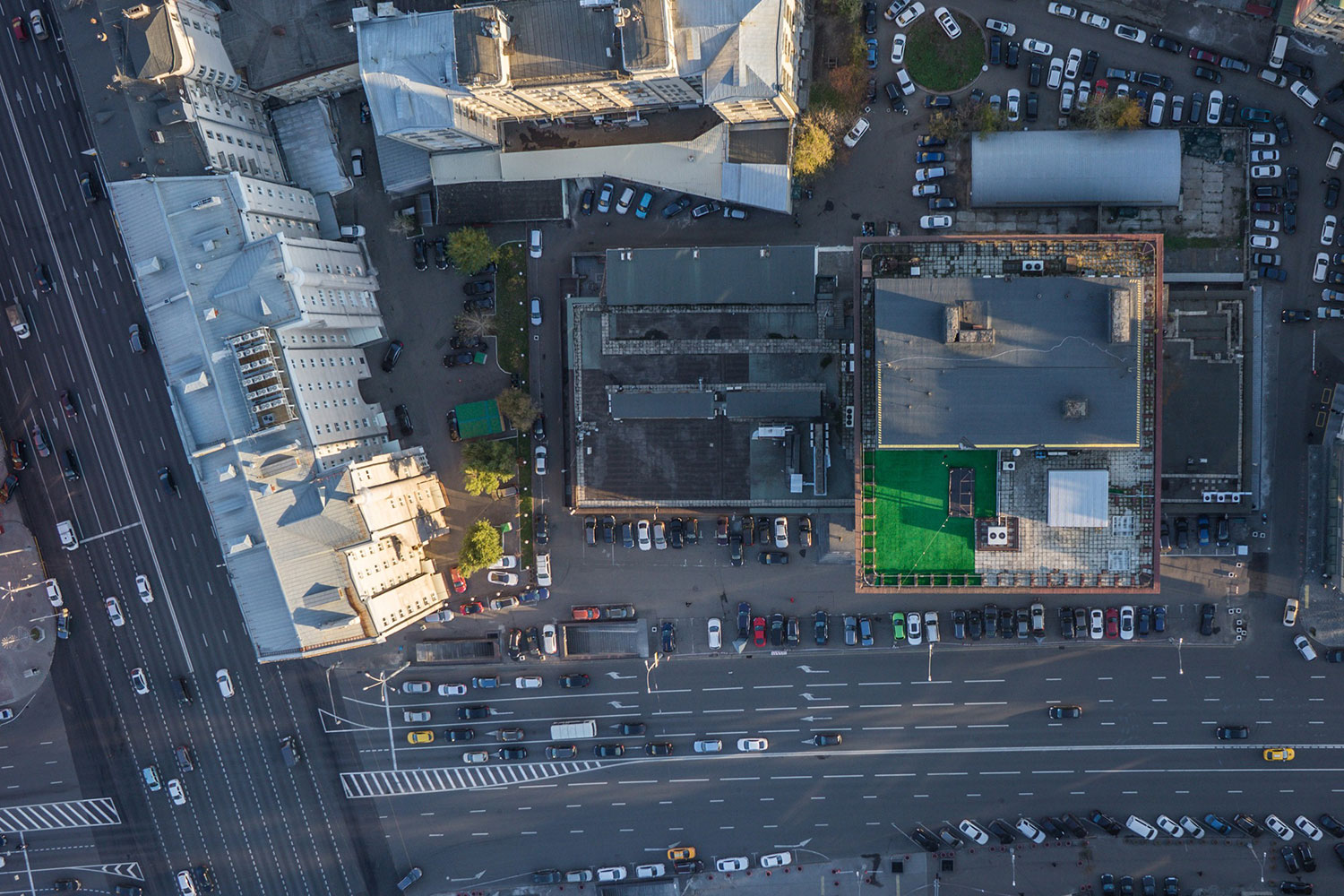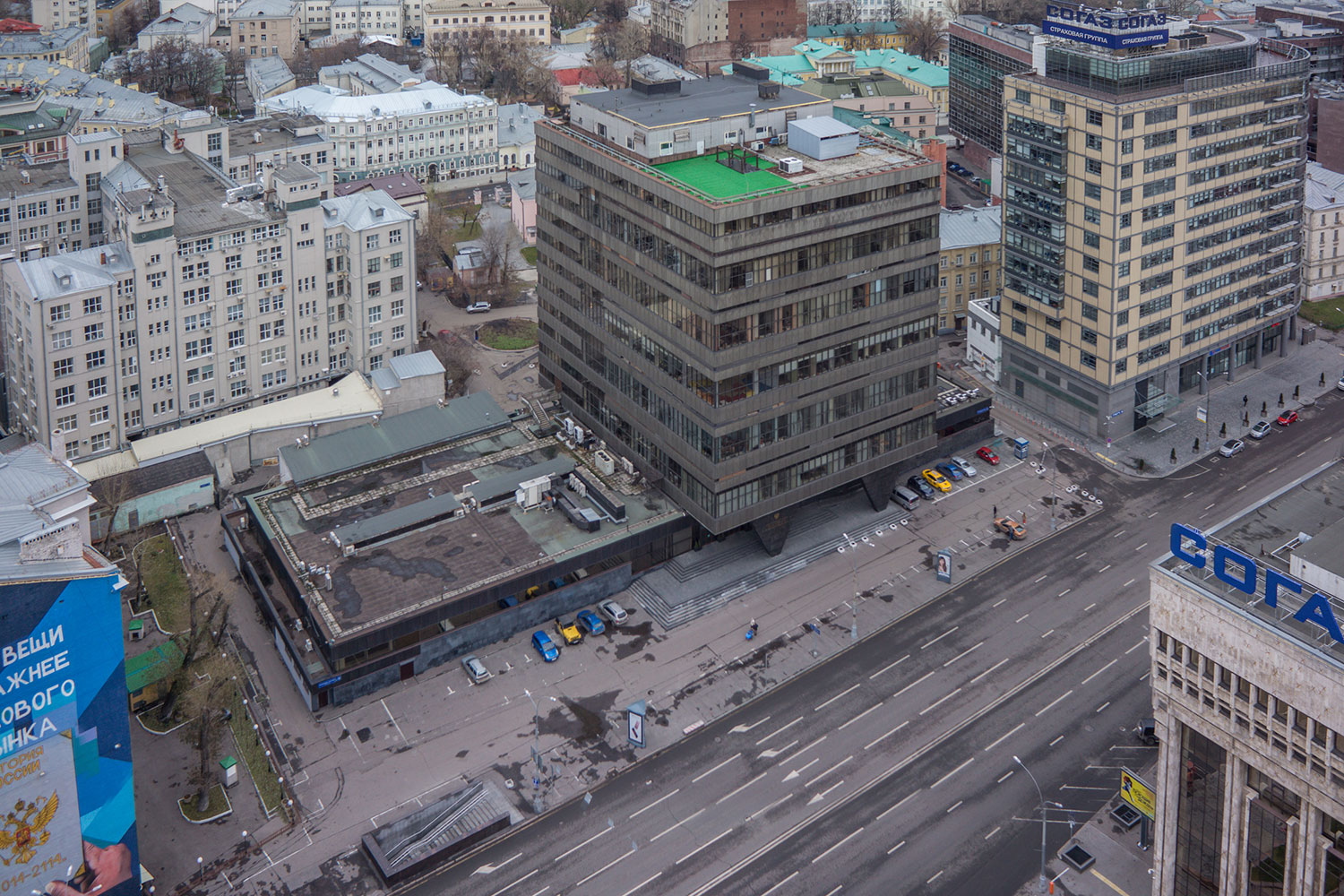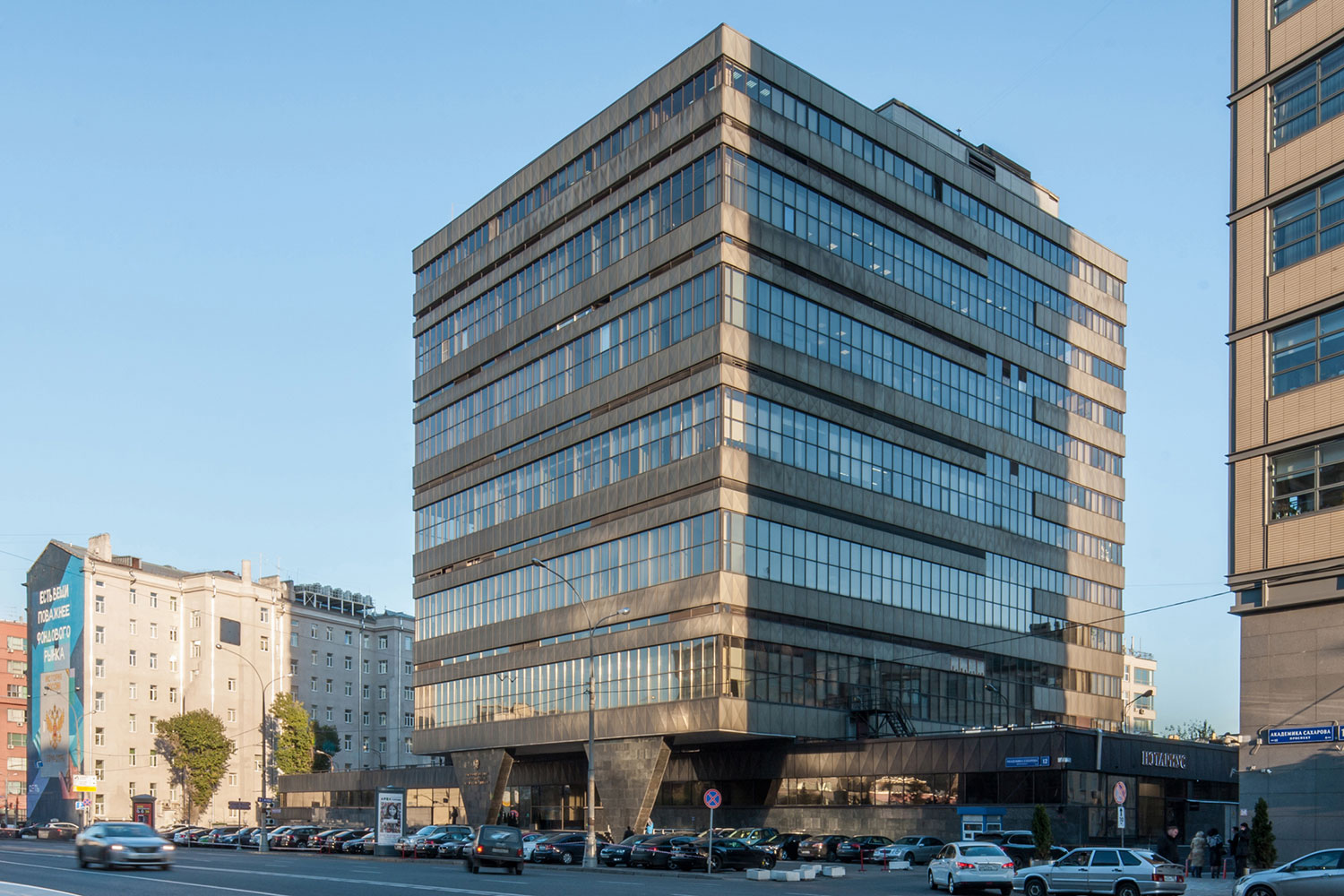Vertical city: here’s why Moscow’s modernist architecture is best seen from above
Examples of post-war Soviet modernism that have survived into the 21st century have been so extensively discussed that there often seems nothing left to say, nothing to reveal. Moscow-based photographer Denis Esakov has found one way out of this impasse: using drones, he and his collaborator Dima Vasilenko have captured ten different sites from above, their bird’s-eye views returning a sense of the original architectural plans and geometric abstraction that informed these striking structures.
Esakov describes these buildings as “living objects”, and his photographs attempt to convey their blend of dynamism and fixity. In the 1960s and 70s Khrushchev mandated a return to a form of modernism that had been buried under Socialist Realist neoclassicism. Architects such as Leonid Pavlov, Yurii Platonov and Andrei Meerson drew up plans that pushed towards this new aesthetic.
Esakov’s work allows us to see these buildings as their makers did for the first time, as if we were returning to the blueprints. And by combining his drone images with eye-level photographs of the same structures, he creates what he calls both a “model” and a “photo-story” for each project. New aspects are revealed: from above we can appreciate fully the symmetry of Platonov’s plan for the Orlov Museum of Palaeontology, for instance, or the complexity of his Institute for Bioorganic Chemistry. As Esakov points out, the image of a building exists before the building itself. His use of drones has allowed him to draw a clearer link between the intention behind, and the reality of, post-war modernism.
Esakov’s use of drones has allowed him to draw a clearer link between the intention behind, and the reality of, post-war modernism
The use of drone technology made shooting a precarious affair: the Russian autumn afforded Esakov and Vasilenko more rain than sunlight, and each wayward shot cost precious battery power, film and time. Shooting at heights of up to 650 metres meant subjecting the drone to air currents that could blow it off course and meant careful calculations in terms of camera weight and positioning.
Originally intended as one part of a trilogy that would also include pre-war avant-garde architecture as well as contemporary constructions, Esakov’s photographs indicate one way forward in ongoing attempts to map and memorialise the particular forms that Soviet modernism took.
Text: Samuel Goff
Image: Denis Esakov/Dmitry Vasilenko
